Among All the World Heritage Sites in Kyoto, Which Should You Choose?
Catalogue
- 1. The Kinkaku-ji Temple
- 2. The Kiyomizu-Dera Temple
- 3. The Ginkaku-ji Temple
- 4. The Nijo-jo Castle
- 5. The Nishi Hongwanji Temple
- 6. The Ryoanji Temple
- 7. The Saiho-ji Temple
- 8. The Tenryu-ji Temple
- 9. The Byodo-In Temple
- 10. The Daigo-ji Temple
- 11. The Kamigamo Shrine
- 12. The Shimogamo Shrine
- 13. The Toji Temple
Show More
The Kinkakuji temple is also called Rokuon-ji (Deer Garden Temple). Because the outer wall of the shariden housing relics of the Buddha is covered with pure gold leaves, it is named Kinkakuji (Temple of the Golden Pavilion). Every day around 9:00am and 4:00pm, sunshine is projected right onto the building, creating a shimmering scene.
The shariden is a three-storied pavilion on the lakeside, combining three styles from different eras. The first floor, called the Chamber of Dharma Waters, continues the shinden-zukuri style, reminiscent of the residential style of the Heian imperial aristocracy. The second floor, called the Tower of Sound Waves, is built in the style of warrior aristocrats, and dedicated to the Buddhist goddess of mercy. The third floor, called the Cupola of the Ultimate, is a Chinese Tang Dynasty Zen hall, and dedicated to three Amitabha Buddhas. The roof is topped with a golden phoenix ornament. However, the shariden is closed to tourists. In addition to those mentioned above, there are many buildings such as the Sekkatei Teahouse and the Fudo-do hall. The outstanding garden scenery within Kinkakuji is a model of the Japanese gardens from the Muromachi period. This period is also called the classical period of Japanese garden design.

As a signature attraction in Kyoto, the Kiyomizu-dera (Pure Water Temple) built in 798 AD is the oldest temple in Kyoto. It is mainly dedicated to the Thousand Hand Bodhisattva. The Kiyomizu-dera is beautiful in all seasons, among which the sakura season and the red-leaf season are the most special. During the sakura season, you can go there to enjoy sakura at night, and it has one of the best views during the red-leaf season.
There is the Jishu Shrine commonly used to pray for marriage, and it is very close to the Sannenzaka Ninenzaka walkway, which can be visited together. There are many shops providing the one-day kimono experience near the temple, such as the Okamoto Orimono, so you can take beautiful photos wearing a kimono.
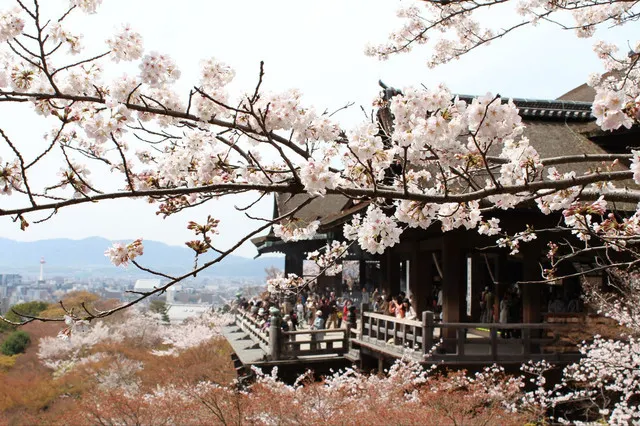
The Ginkaku-ji Temple is actually called Jishō-ji (Temple of Shining Mercy). Because the Kannon Hall inside is named Ginkaku-ji, it is collectively called the Ginkaku-ji Temple (Temple of the Silver Pavilion).
There are some legends about why Ginkaku-ji got this name. One of the legends says that after Shogun Ashikaga Yoshimasa saw the splendid and magnificent Kinkakuji Temple built by his grandfather Ashikaga Yoshimitsu, he wanted to copy it and build Ginkaku-ji Temple coated with silver leaves. But as the financial strength during his period was not comparable, his dreams couldn't be entirely realized, but the name of Ginkaku-ji was still passed down.
With less visitors than Kinkakuji Temple, Ginkaku-ji Temple has a simple and quiet beauty in turn. Walking along a circular route, you can enjoy Ginkaku-ji Temple from various angles, as well as pine trees, the bamboo forest, the pond, temple buildings, and a sand garden around it.
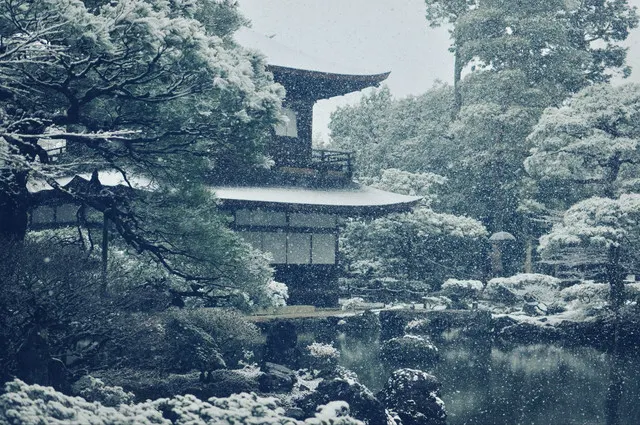
Built in 1603 by Tokugawa Leyasu, the Nijo-jo Castle witnessed the rise and fall of the Tokugawa family, and is the place where the Japanese historical dynasties change. There are many built heritage deserving to visit in the city, including the former Imperial Villa, the biggest building of the Ninomaru Palace, the Honmaru Palace, the southeast corner turret, and the gardens.
The Nijo-jo Castle is close to the Imperial Palace. It is said to protect the emperor, but is actually a threat to the emperor and the power symbol of the Tokugawa Shogunate. In the city, the "nightingale floors" in the corridors make a chirping sound when walked upon. They are the police organs set up by the shogunate rulers to protect their own lives.
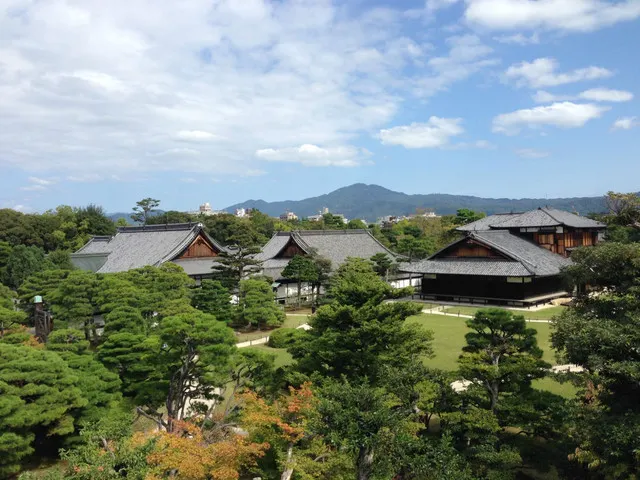
The Nishi Hongwanji is the head temple of the Jodo Shinshu sect of Japanese Buddhism. It contains 5 famous buildings, and is an example of ancient Japanese architecture. Buildings like the karamon gate, the Shiro Shoin, the Kuro Shoin, and the oldest Janpanese Noh stage are designated as National treasures. The building itself is gorgeous.
The temple hall has a giant roof, and tatami mats are placed indoors. Believers can feel free to worship there, and may have a chance to see the Japanese Buddhist memorial service. There are several ginkgo trees with branches stretching up into the sky. Each time the leaves turn yellow in autumn, the temple is immersed in beautiful scenery.
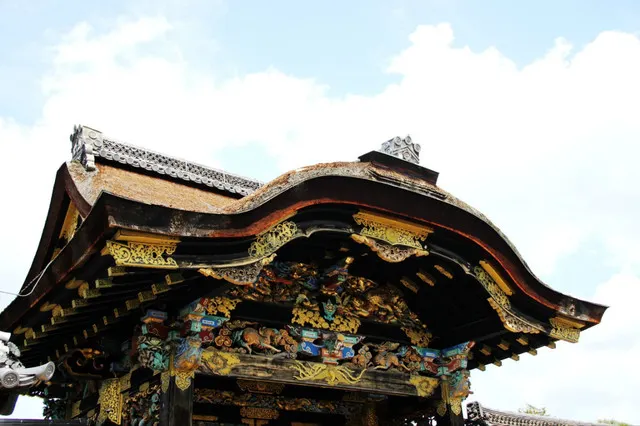
The Ryoanji Temple is a Zen temple. It preaches the Zen philosophy of meditation to escape the busy world in every corners, such in the stone garden and in the hand-washing pool. The garden is representative of the Japanese dry landscape courtyard, with white gravel for the sea, rocks for the islands, and moss for the forest. The garden features 15 rocks. From any vantage point, one of the rocks is always hidden from the viewer, and is view-able only while you are walking.
The Ryoanji Temple is also a famous place to appreciate maple trees, but has less visitors than other popular tourist attractions, ensuring you avoid the crowds and experience quiet Zen in Kyoto.

The Saiho-ji Temple was first founded as a villa for Shoto Kutaishi, and renovated as a Zen temple in 1339. It is famed for its garden. 100 kinds of moss grows here and there, so it is also referred to as the moss temple. As a world heritage site and one of the oldest Japanese gardens, an appointment must be made in advance before visiting the temple.
The worship process at the Saiho-ji Temple is very ceremonial. At first, you must send a postcard with a return address to the temple 7 days in advance, and the reservation is successful once you receive the card back from the temple. Upon arrival on time, you will be introduced to the Main temple and deliver a donation. Then, you need to copy the Hannya Shingyo (Text of the Heart Sutra) with a brush while the monks are chanting. You are only allowed into the courtyard after you're done copying the Sutra.

The Tenryu-ji Temple is a must-see temple to visit in Arashiyama. After passing through the famous Togetsukyo Bridge, you will see the famous Tenryu-ji where the Emperor Go-Daigo (it is said that he is the father of the priest Ikkyu Sojun) became a monk. There is also a Hachiman shrine inside. After buying tickets, you can enter into the Main temple, where all rooms are tatami rooms. There is also a portrait of the founder of the Tenryu-ji temple.
Arashiyama is about 20 minutes drive from downtown Kyoto, so you can visit the Tenryu-ji Temple while enjoying the scenery on the way to Arashiyama. The Tenryu-ji Temple has a open layout, and boasts pavilions, gardens and flowers. The courtyard below the gallery is beautiful, the spring is gorgeous, and cherries blossom wildly. Here, the flowers are the most beautiful in April, while appreciating maple trees in the courtyard in November is also delightful.

The Byodo-In Temple, an early Japanese wooden architecture, is built along the Uji River, Kyoto. It is said that it is the ultimate realization of what Japanese think of the Western Paradise in Buddhism. Established in 1052 AD, this temple represents the "Pure Land Garden" (Jodo Teien), whose specifications are reference designators for later Japanese gardens.
The most representative one among the ancient temples is the Phoenix Hall. The Phoenix Hall is featured on the reverse of the Japanese 10-yen coin, and the phoenix statue in the Hall appears on the reverse of the current 10,000-yen note, attesting its significance in Japan. There is a huge "wistaria tree" more than 280 years old, and the wisteria flowers bloom from April to May every year.
Located at Uji, this temple is about 30 minutes from Kyoto. In addition to the renowned Uji's matcha tea, there are the Genji museum in Uji. It is recommended to spend half a day to one day here.
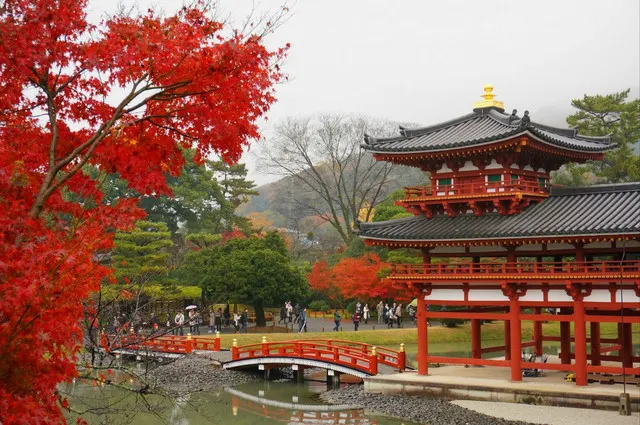
Located in Fushimi Inari, Kyoto and founded in 874, the Daigo-ji Temple has the oldest Kyoto wooden structure, i.e., the five-story pagoda, and is also the head temple of the Daigo-ha sect of Shingon Buddhism. It is well-known because Toyotomi Hideyoshi organized cherry blossom viewing parties in its gardens.
In 1598, Toyotomi Hideyoshi transplanted over 700 cherry blossom trees from Kinai, and updated the Sanboin sub-temple and its pond garden, and then held a massive party. Nowadays during the cherry blossom season, a wide variety of cherry blossoms come into bloom with rich colors and characteristics, and the lannesiana is also a charming.
The Kamigamo Shrine, situated along the upstream of the Kamo River in central Kyoto, is officially named the Kamo-wakeikazuchi Shrine. It is dedicated to the veneration of the enshrined deity Kamo Wake-ikazuchi, the kami of thunder, and is one of the oldest shrines in Kyoto.

The Shimogamo Shrine (Lower Kamo Shrine) is one of the oldest shrines in Kyoto.
Its formal name is Kamo-mioya-jinja. As the junction of the Takano and Kamo rivers is called Shimogamo, it is also called the Shimogamo Shrine.
The Shrine itself is not special, but behind it is a primeval forest named "Tadasu no Mori" (Forest of Correction) which has existed since the Primeval Era. The pilgrimage route of the Shrine is a "forest trail" surrounded by towering trees, full of silence. Here, you can definitely forget the daily bustles and hassles of life, and find peace of mind.
In addition, the Aoi Festival, one of three biggest festivals in Kyoto, takes place every year on May 15 in the Shimogamo Shrine.
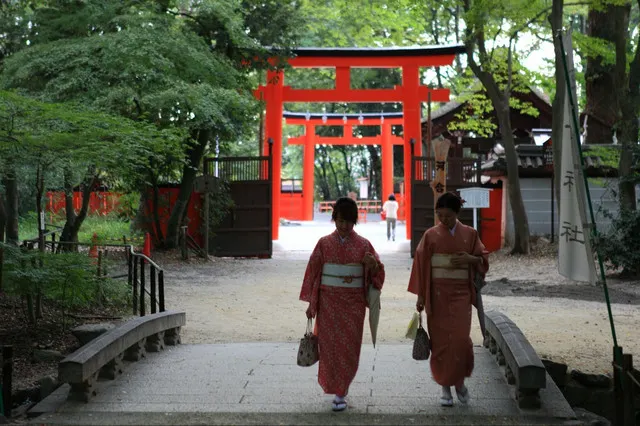
Also called the Kyo-O-Gokoku-Ji Temple, the Toji Temple was first founded in 794 AD, is a significant National Treasures of Japan, and was also the residence of Kobo Daishi (Kukai) who brought Buddhism into Japan. Kobo Daishi was put in charge of Tō-ji in 823 by order of the Emperor, thus becoming a temple for Shingon Esoteric Buddhism. As well as being the symbol of the Toji Temple, the five-storied Pagoda is also known as a Kyoto landmark. It stands 56.4m tall, and was rebuilt by Tokugawa Lemitsu in 1644.
You can also visit the Homotsukan Museum (Toji's treasure house), which displays several Buddhist statues and holds two special exhibitions in spring and autumn every year. It is also one of the famous places to enjoy cherry blossoms and maple trees.
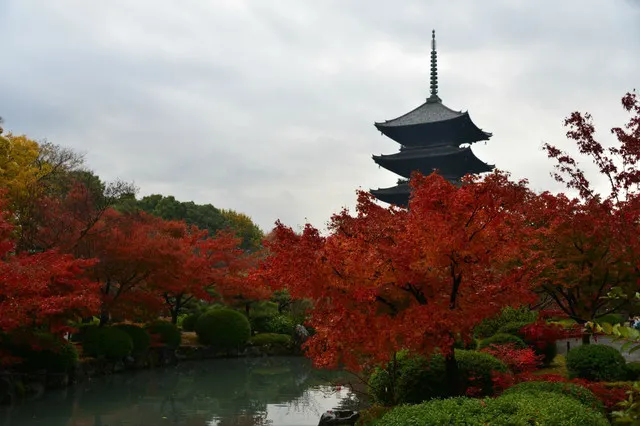
Trending Travelogues
Popular Trip Moments
Popular Travel Types
Popular Attractions
Popular Ranked Lists
Popular Destinations
Recommended Attractions at Popular Destinations
About











Site Operator: Trip.com Travel Singapore Pte. Ltd.







